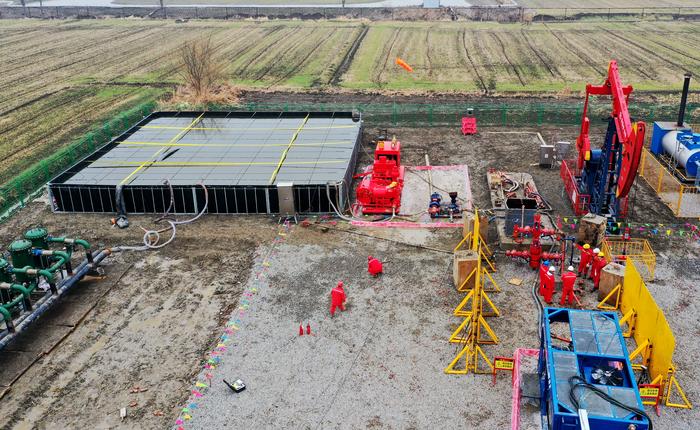|
| 2021-01-27 来源: 中国石化新闻网 |
| 石化新闻 |
中国石化新闻网讯 据今日油价1月23日报道,石油公司转型为低碳、绿色企业是否有利可图?这对投资者来说是个大问题。与石油投资者和管理层已经习惯的投资相比,绿色投资有着较低的风险,不过其获得的回报也较低。此外,石油公司在可再生能源投资方面没有特别的优势——其中地热能除外,因为它们可以利用其丰富的钻井专业知识。为了使金融市场长期向好,石油行业的管理者需要超越可再生能源投资的“标准框架”。此外,由于投资者的贴现行为,市场不太可能给石油行业拥有的可再生能源项目赋予太多价值。绿色投资机会并不重要,除非大到足以吸收石油巨头目前的巨额现金流。如果石油公司仅仅停止在勘探和生产上的资本支出,一些人对它们能找到足够的可再生能源项目来取代现在在石油和天然气上的支出表示怀疑:“如果没有足够的绿色能源项目,石油公司将无法用更环保的能源产品来取代石油收入。” 脱碳需要的不仅仅是风能,一些替代需求,如能源存储或核能需要巨额的资本支出。五大石油公司的年度资本支出计划加在一起,可以还不足以建设完成占世界发电能力0.5%的10个核电站。或者,更实际地说,它们或许能满足全球1%的能源储存需求,不过,这些都是粗略的估算,还有很多领域可以投资。 所有石油公司资本支出都会随油价波动而波动,每年500亿到1万亿美元似乎是一个合理范围。这是一大笔钱。然而,全球电力部门脱碳所需资本支出每年可能接近1万亿美元。而电力供应商支出远远达不到这一水平,尤其是在美国,电力生产商正处于向脱碳的缓慢过渡阶段。全世界每年用于脱碳的电力开支(超过2020年)至少有3000亿美元的缺口。然而,这些数字还不包括更多经济电气化的额外支出(电动汽车、化学加工和加热),这将使电力行业的支出至少增加三分之一。考虑到额外支出,目前的支出与向现有用户和新用户提供无碳能源所需的支出之间的差距将上升到每年6000亿美元左右。 因此,如果石油工业认真对待脱碳,它可以将其资本项目转向电力脱碳。而电力行业可以吸收这些碳,尽管可能并不情愿,因为许多美国电力公司在脱碳转型过程中步调缓慢是有原因的。然而,石油公司从绿色投资中获得的回报可能会更低,现在石油公司大量涌入该行业,不仅会更快地降低他们的盈利能力,而且还会减少石油产品销售。放慢步伐,失去市场份额,还是加快步伐,用低利润销售取代高利润销售,但保持市场份额,这不是一个容易的决定。 目前,石油公司希望在减少或消除碳排放方面取得长足进展,同时也希望人们保持耐心,因为改变大型企业的战略投资政策需要很长时间。如果它们不理会那些悲观的预言者,继续保持良好的财务状况,它们将拥有资源来帮助世界结束对化石燃料的依赖。在分析石油工业战略时,请记住,为脱碳做出贡献与纯粹的绿色能源经济是有区别的。为一个无论如何都会上涨的电力行业的融资,不应该真正算作对企业碳排放的抵消。 所以,总而言之,石油行业可以在脱碳方面进行巨大而有意义的投资。这将加速或促成全球环境整治进程,但石油利润可能会大大降低。或者,石油行业可以像往常一样继续经营,继续投资于长期衰退但仍非常庞大、重要的现有业务。这种情况下,石油公司的希望不过是,这个看似不可避免的衰退发生得比预期要慢些,这也是该行业目前正在努力解决的问题。 王佳晶 摘译自 今日油价 原文如下: Why Decarbonization Could Make Strategic Sense For Oil Majors Can oil companies profitably transform themselves into low carbon, green enterprises? That is a big question for investors. We have already noted that green investments because of their lower risk profile earn lower returns than those to which oil investors and managements have become accustomed. Also oil companies bring no particular edge in renewable investment with the possible exception of geothermal which could utilize the industry’s considerable drilling expertise. In order to make a long term positive financial oil industry managers need to look beyond the standard menu of renewable investments. Plus the market is not likely to ascribe much value to oil industry owned renewables due to a conglomerate discount by investors. Green investing opportunities will not matter unless large enough to absorb the presently huge cash flows of the petroleum majors. If oil companies simply stopped capital spending on exploration and production, could they find enough renewable projects to replace what they spend now on oil and gas? The doubters sneer, “There aren’t enough windmills out there. “ Without enough green projects, oil companies would have no way to replace oil -derived revenues with something greener but still in the energy business. Isn’t that the argument of those who want the oil companies to stick to their knitting? We can’t speak for the windmill count, but decarbonization requires more than windmills, and some of those alternative needs, such as energy storage or nuclear power (if someone can manage to get nuclear construction under fiscal control) require huge capital outlays. The combined annual capital expenditure program of the top five oil companies could fund completion of fewer than ten nuclear power plants accounting for maybe 0.5% of world electric generating capacity. Or, more practically, they could finance maybe 1% of the world’s energy storage needs. Those are rough numbers, but you get the idea. There is no shortage of places to put the money. The capital expenditures of all oil companies bounce around, depending on the price of oil, and $500-$1,000 billion a year seems a reasonable range to use. That is a lot of money to spend. However, the worldwide capital expenditure required to decarbonize the electricity sector may be close to $1,000 billion per year. And electricity providers are nowhere close to spending that amount, especially in the US where electricity producers are on a slow motion transition to decarbonization. We would venture that the annual shortfall in the spending needed to decarbonize electricity worldwide (spent over 20 years) is at least $300 billion. These numbers, however, do not include additional expenditures to electrify more of the economy (electric vehicles, chemical processes and heating) which would raise electric industry spending by at least one third. Taking into account that additional spending, the gap between present spending and that required to furnish carbon-free power to present and new users rises to around $600 billion per year. So, if the oil industry were serious about decarbonizing it could shift its capital program into electricity decarbonization. And the electric industry could absorb it although perhaps unwillingly because many U.S. electric companies have their own reasons for slow walking their decarbonization transitions. However as noted previously, the oil companies may earn a lower return from green investment and really piling in now would not only reduce their profitability faster, but also reduce sale of petroleum products. Go slow and lose market share or go fast and replace high margin sales with low margin sales but keep the market share? Not an easy decision. Right now, oil companies would love to be viewed as progressive, making strides to reduce or eliminate their carbon emissions, while still pleading for patience because it takes a long time to change strategic investment policy in very large corporations. And if despite the doomsayers they surprise and continue to do well financially they will have the resources to help the world end its reliance on fossil fuels. In analyzing oil industry strategies, keep in mind that there is a difference between making a contribution to decarbonization as opposed to mere greenwashing. Financing a windmill that would have gone up anyway shouldn’t really count as an offset to corporate carbon emissions. So, to sum up, the oil industry could make enormous and meaningful investments in decarbonization. That would accelerate or enable the process of global environmental remediation but with likely far lower oil profits. Or the oil industry can continue a business as usual strategy by continuing to invest capital in a still very large, important legacy business in secular decline. Their hope in this case is simply that the industry’s seemingly inevitable decline takes place more slowly than expected. That seems to be the issue the industry is grappling with right now. And there is a lot at stake. |








